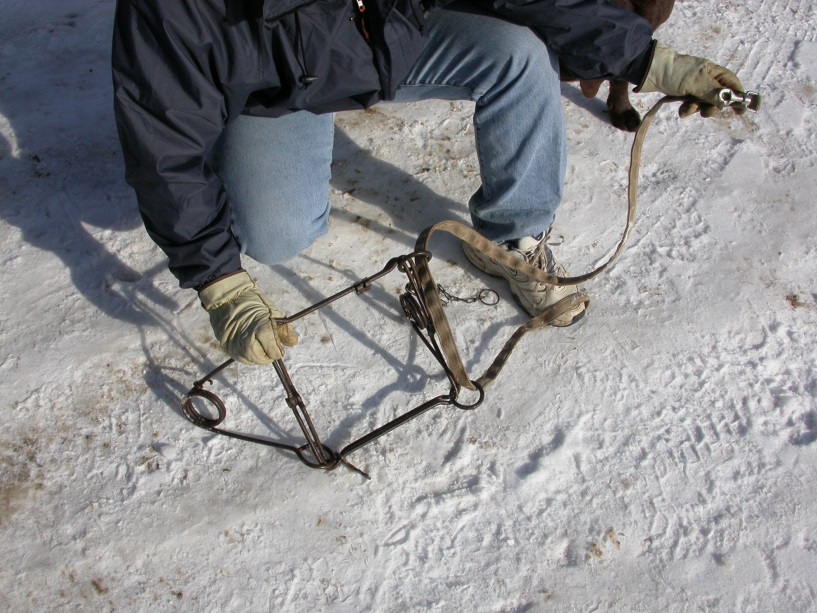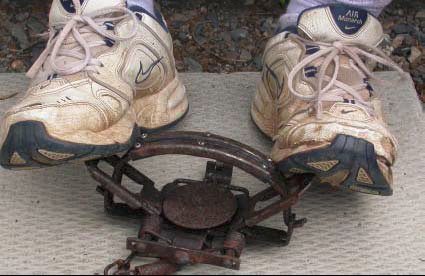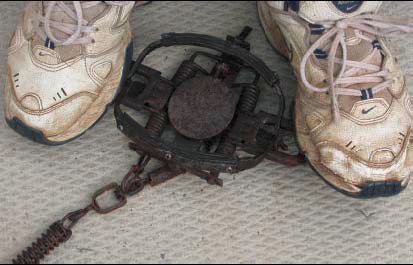Protect your dog from wildlife traps
How to protect your dog from wildlife traps and what to do if your dog is caught in a trap.
Overview
Licensed trapping is highly regulated and provides cultural and economic benefits to many communities in Ontario. It also plays an important role in humanely removing animals that impact communities, crops or livestock.
Licensed trappers, with the proper authority, are allowed to trap:
- wildlife on:
- Crown land, which is regulated by the ministry
- conservation reserves and some provincial parks (regulated by the ministry)
- private land, controlled by landowners and municipalities
- 23 species of furbearing mammals including beaver, muskrat, raccoon, striped skunk, fox, coyote, wolf, marten, fisher and many more
Farmers can set traps on their own land without a licence.
Your responsibilities
Trappers and landowners
Trappers must be licensed to trap on public and private land in the province.
They must undergo mandatory training to learn approved trapping methods and how to minimize the accidental capture of unintended animals including house pets.
Learn more about the rules for legally trapping in Ontario.
Dog owners
It’s an offense under the Fish and Wildlife Conservation Act, 1997 for a dog owner in Ontario to allow their dog to run at large in an area usually occupied by game wildlife, such as forested lands and woodlots.
How to avoid traps
While registered trapping generally happens in the winter and doesn’t occur in parks in Southwestern Ontario, campgrounds or day use areas, you should always be cautious and take steps to ensure your dog is not injured by legally set traps.
Consider:
- controlling your dog at all times by keeping them on a leash when on Crown land, conservation reserves, private land and in some provincial parks (ask park staff if trapping is occurring in the park you’re visiting)
- getting permission from the landowner, asking if they trap on their property and finding out where traps are set if you’re walking your dog on private land
- safely securing your dog at home, on a chew-proof tether, in a fenced yard, chain-link kennel or other means when you’re in an area or community where trapping occurs
What do to do if your pet is caught in a trap
Photo credits: Nova Scotia Dept. of Natural Resources
Conibear-style trap
If your pet is caught in a Conibear-style trap:
- Use your dog’s leash, a belt or a piece of rope to thread the leash through the two round eyes of one of the two trap springs and place the loop end of the leash around the toes of your shoe (stand on the end if using a rope or belt).

- Repeat step 1 to thread the leash through the round eyes of the spring a second time to improve your leverage.

- Pull the leash tightly to compress the spring until the safety hooks can be hooked around both arms of the spring. You will have to pull very hard as the springs are very strong. Once the safety hook is in place, you can carefully remove the leash from the first spring. Repeat these steps for the second spring and open the trap to release your pet.

- Take your pet to the veterinarian immediately.
Foothold-type trap
If your pet’s paw is caught in a foothold-type trap:
- Press down on each of the trap springs with your feet.

- Once the springs are compressed, the jaws of the trap can be spread open by hand - be careful not to let the trap close on your hands.

- Carefully examine your pet’s paw for signs of injury and consider taking them to a veterinarian .
Report an illegal trap
Traps are considered legal if they are set by:
- a farmer on their own land (even without a licence)
- a licensed trapper on Crown land under authority of the ministry
- a licensed trapper on private land with the owner’s written permission
It is illegal to tamper with a lawfully set trap however, if you see a trap and suspect it has been set illegally:
- do not approach it and keep pets and children at a safe distance
- note its location
- contact:
- your local ministry work centre if you’re on Crown land
- the property owner whose land the trap is set on, if you’re on private or municipal land